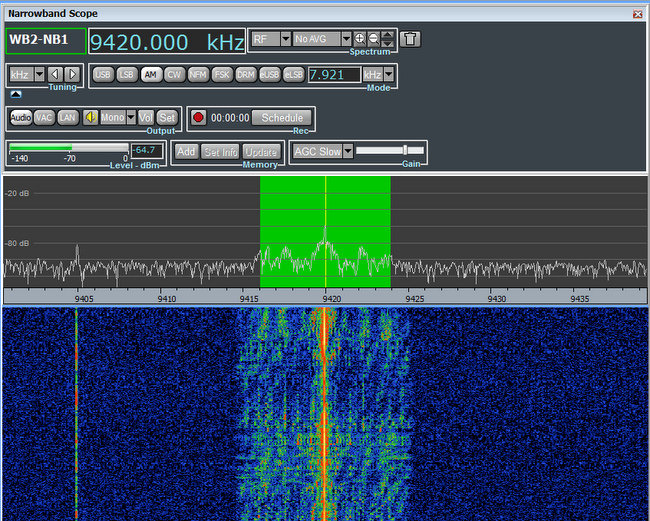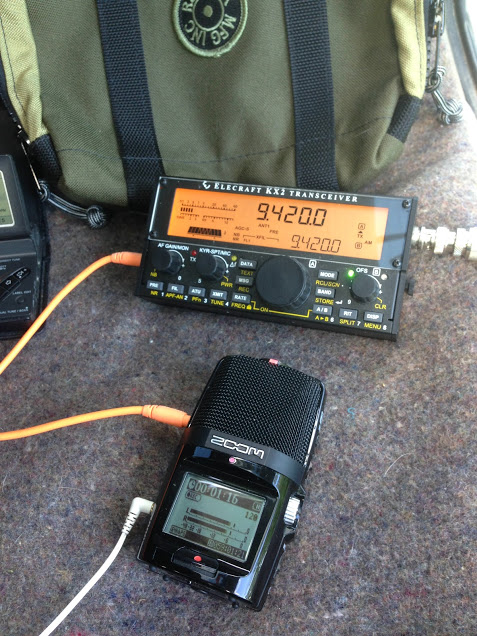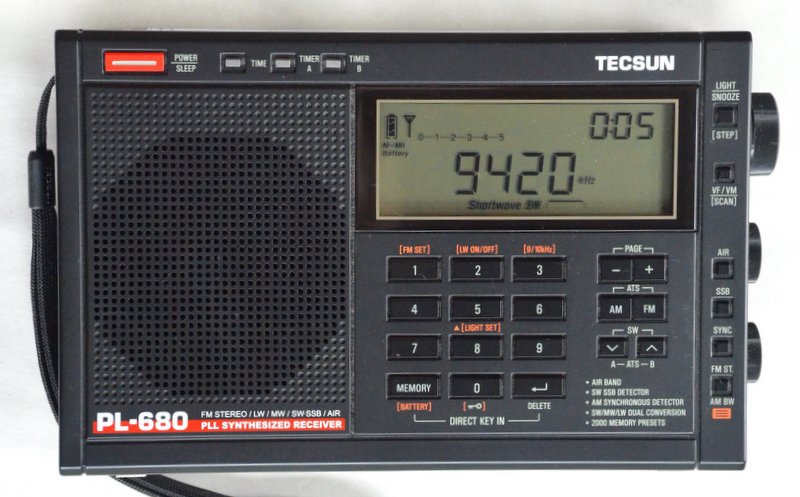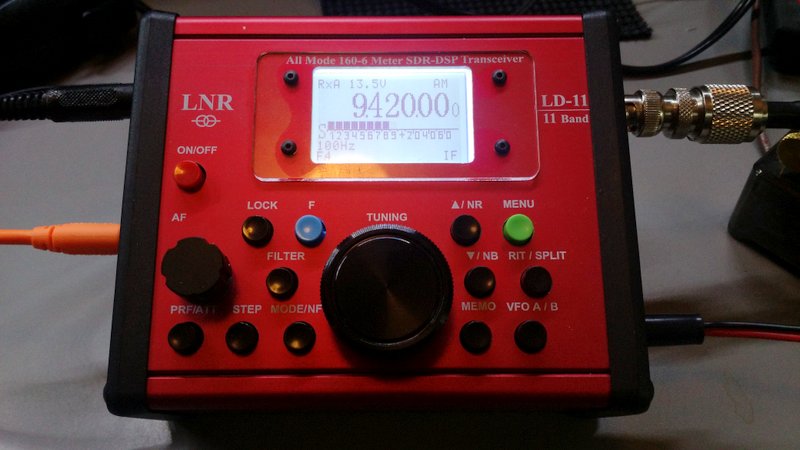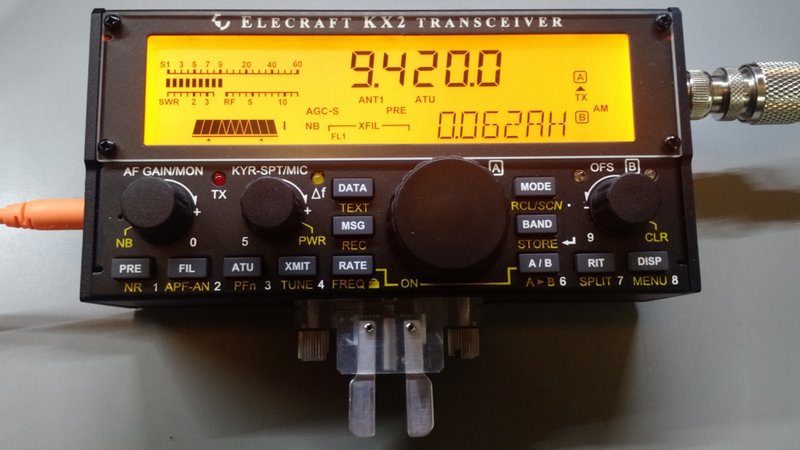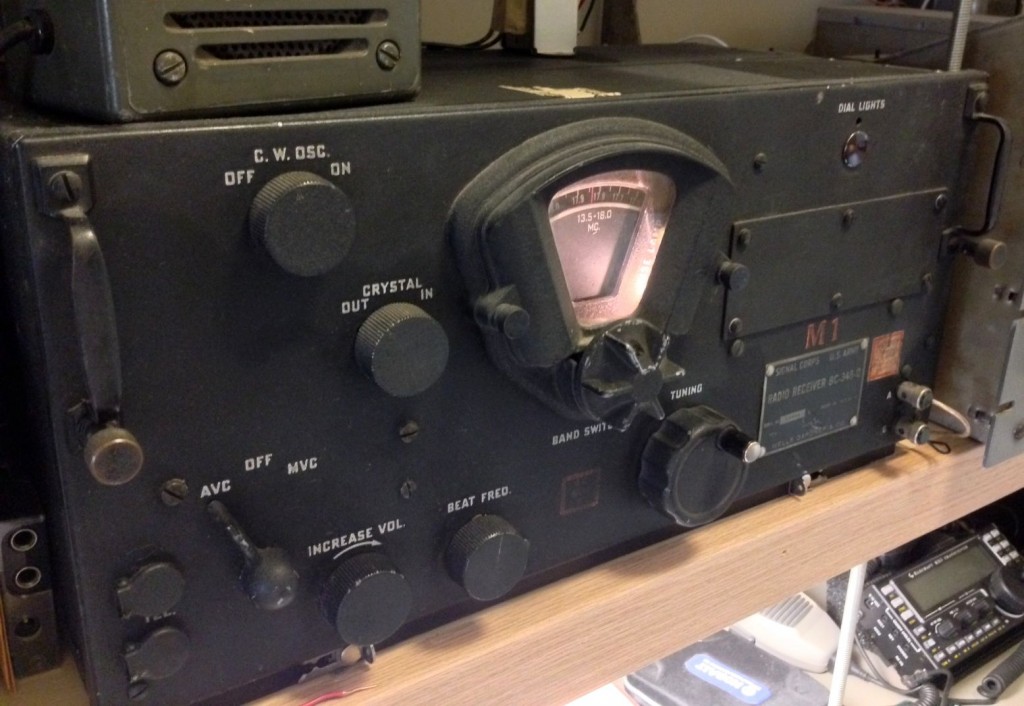
As is my typical style, I’ll do some DX’ing for weeks, if not a month or more before I sit down and write out logs. I focus on logging and recording first, then writing reports later as I’m worried i’ll miss something on the dials.
I have a few good ones this time around, like usual. Lets get on with the logs!
There are a few good ones here, including The Voice of Mongolia 12035 kHz, Vivdh Bharati on 9870 kHz and others along with some usuals.
2850 kHz, 3250 kHz & 3320 kHz, The Voice of Korea via Pyongyang to North Korea and the Far East in Korean on August 2, 2016 from 1623 to 1627UTC. The tropical band signals of VoK are somewhat rare and kind of weak during the summer but much more regular and stronger in the winter. This time around, 2850 kHz is the strongest with a woman singing in Korean. The signal is weak but easy to understand despite the noise. 3250 kHz and 3320 kHz both featured a man talking, 3250 had a song shortly after my recording began. 3560 kHz wasn’t heard on this date, but it was heard back on July 23, 2016 at 1502UTC with a pretty weak signal, full of noise, yet music was definately heard above the buzzing!
2850 kHz audio here: https://soundcloud.com/onairdjpaulwalker/vok-2850-august-2-2016-8-23-35.
https://soundcloud.com/onairdjpaulwalker/vok-2850-august-2-2016-8-23-35
3250 kHz audio here: https://www.youtube.com/watch?v=Y2Fzy7bm_3A
3320 kHz audio here: https://www.youtube.com/watch?v=EEB0Qx9bZLg
3560 kHz audio here: https://www.youtube.com/watch?v=djJIa4JLWow
4885 kHz, Echo of Hope to North Korea in Korean on July 28, 2016 at 1623UTC. Their other frequencies always seem to be jammed but I’ve not heard this Anti North Korean station have it’s 4885 kHz signal jammed. It’s a pretty good signal, clean, clear, fairly steady with only some light fading. Audio here: https://www.youtube.com/watch?v=sgZUOjZaQPE
https://www.youtube.com/watch?v=sgZUOjZaQPE
5020 kHz, Solomon Islands Broadcasting Corporation via Honiara to the Solomon Islands on August 1, 2016 at 0953UTC. The SIBC is here just about nightly and at least very poor levels. The signal on this night with local music is fair but with a good amount of fading and noise. Audio here: https://www.youtube.com/watch?v=A67vQd04Uj0
5857 kHz “HLL Seoul” on July 28, 2016 at 1634UTC. A weather broadcasting station from Seoul, South Korea often with digital data but does have voice from time to time, I’ve heard both but never this clear. The voice isn’t usually this clear or loud. Audio here: https://www.youtube.com/watch?v=a5eICMqMCaQ
https://www.youtube.com/watch?v=a5eICMqMCaQ
7280 kHz, The Voice of Vietnam in Russian via Hanoi to Europe on July 26, 2016 at 1639UTC. A poor signal with lots of fading, static and noise and possibly some interference as well. A man was heard talking in Russian. Audio here: https://www.youtube.com/watch?v=h7nt1J0QGWQ
9390 kHz, Radio Thailand World Service in English via Udon Thani on July 23, 2016 at 1955UTC. Radio Thailand is here from time to time and while it may be strong sometimes, it’s usually a pretty fade-y signal. This signal would be on the high side of fair if it wasn’t for all the noise and fading. The recording starts off with what sounds like ad’s for a business marketed to english speaking ex pats and tourists. A sign off message then airs but the carrier doesn’t drop as far as I can tell before the German service starts at 2000UTC. Audio here: https://soundcloud.com/onairdjpaulwalker/radio-thailand-9390-july-23
9420 kHz, The Voice of Greece via Avlis to Europe. on August 1, 2016 at 2326UTC. The Voice of Greece is not heard here too often and when it is, it’s often a noise, static and fade-y ridden signal like this is with a woman talking, but about what, I don’t know. Audio here: https://www.youtube.com/watch?v=ul6kf5cdvho
9635 kHz, The Voice of Turkey in French via Emirler to Western Europe on July 23, 2016 at 2021UTC. The Voice of Turkey is pretty rare here, I can’t recall it paying a visit very often. The is about as good as I can recall hearing them here Despite the extreme noise, It is still a steady signal with a musical selection, a man talking and then a musical selection before the carrier is turned off. Audio here: https://www.youtube.com/watch?v=MMXlIHiDl7U
9735 kHz, Radio Taiwan International in Japanese via Paochung/Baujong to Japan on July 31, 2016 at 2258UTC. A man in Japanese mentioning Tapei, a short musical selection plays before a few beep tones and a carrier being cut. The signal is pretty steady and strong with some light fading, but still a listenable signal. Audio here: https://www.youtube.com/watch?v=-K6NVvrriwY
https://www.youtube.com/watch?v=-K6NVvrriwY
9790 kHz, Radio Romania International in English via Tiganesti to the Far East. The English service broadcast with a lady talking about a contest with the giveaway being a CD. Details are given how to enter the contest. The signal was somewhat weak but there was a moderate amount of nosie with some fading on the channel. I detected the 9760 kHz in english to Western Europe and I could hear audio, but nothing worthy of recording or logging it “officially”. 9790 kHz audio here: https://www.youtube.com/watch?v=BGiD1OHVWKw
9870 kHz, All India Radio Vividh Bharati Service in Hindi via Bangalore to South Asia on July 27, 2016 at 1700UTC. They are here just about everyday, sometimes at poor levels but usually at least fair. However, some days like this time, they are good to excellent with great audio, steady signal and no real noise or fading. I love hearing the music they play! Audio here: https://soundcloud.com/onairdjpaulwalker/air-9870-july-27-2016-8-59-1
https://soundcloud.com/onairdjpaulwalker/air-9870-july-27-2016-8-59-1
9997 kHz LSB, RWM Moscow Russia on July 27, 2016 at 1643UTC. Every source I’ve seen places them on 3 frequencies, including 9996 kHz. I swear each time I’ve heard them, it is clearer on LSB and 9997 kHz then 9996 kHz! They are a fairly regular visitor here, not every day, but at least weekly but usually, they are buried in the noise between slop from WWV/H and atmospheric crud. Well, this today the beep from RWM was very very much in the clear. Audio here: https://soundcloud.com/onairdjpaulwalker/rwm-9997lsb-july-27-2016-8
11540 kHz, VOA Radio Ashna in Pastho via Udon Thani to Iran on August 2, 2016 at 1654UTC. A very weak signal, barely above the static and fading with a man talking in the Pashto language. Audio here: https://soundcloud.com/onairdjpaulwalker/voa-ashna-11540-in-pashto-to
11800 kHz, Radio Romania International in Romanian via Tiganesti to the Middle East on July 27, 2016 at 1647UTC. The signal was fair with a moderate amount of fading and atmospheric noise. I heard a romanian language tune followed by a man then a woman talking. Later on, I heard what may have sounded like feature report of some kind, I don’t think it was a news broadcast. Audio here: https://soundcloud.com/onairdjpaulwalker/rri-11800-july-27-2016-8-47-16
11735 kHz, Zanzibar Broadcasting Corporation in Swahili via Dole, Zanzibar on July 28 at 1659UTC. They are only 50KW and while some sites list them as non directional, they aren’t. A directional curtain antenna has been spotted on Google maps, but I don’t know what their beam is. That being said, I can count on them being here daily. Somedays it’s poor, some days it’s fair and other days it’s somewhat good like this. There are even days when it’s near excellent with a clear, steady signal and good audio. In this clip, the audio sounds like a cross between being full of digital artifacts and some propagation issues. The audio is not as good as usual, but still pretty listenable with not much fading and little noise or interference. There was a song, followed by a little dead air then a station promotional announcement and another song. ZBC, when playing music, is an enjoyable listen! Audio here: https://www.youtube.com/watch?v=SSvyT-Do1cE
https://www.youtube.com/watch?v=SSvyT-Do1cE
11950 kHz, Radio Romania International in French via Galbeni to Southern Europe on August 1, 2016 at 1640UTC. The signal was fair but with a moderate amount of fading. Thankfully, no interference or too much atmospheric noise. A woman talking in french, presumably reading the news. Audio is here: https://www.youtube.com/watch?v=PioNenuF358
12019 kHz, The Voice of Vietnam in Chinese(?) via Hanoi to Indonesia on July 31, 2016 at 2236UTC. I can usually hear the Voice of Vietnam shortwave broadcasts in multiple languages from their Vietnam based transmitter sites across very frequencies. This signal is fairly weak with some nooise and fading. It sounds like a news broadcast or feature report to me. Audio here: https://www.youtube.com/watch?v=L5GRlWGQbBg
12035 kHz, Voice of Mongolia via Ulaanbatar with 180 degree beam south from Mongolia On August 1, 2016 at 0900UTC, I had the best signal ever from time. If it wasn’t for all the atmospheric noise and fading present, the signal would’ve been an incredibly pleasant listen. During this time, I happened to catch the DX’ers mailbox program in which they read out a letter from me. However, this is the second time the July 4th broadcast has been replayed. Still great to get them so well here, usually they are weak and barely above the noise floor. My Wellbrook ALA1530LNP was used here instead of the 225 foot longwire. The loop provided noise reduction and nulling/directional capabilities that really helped out! Audio here: https://www.youtube.com/watch?v=bqTox0j8P3k (Here’s a tip when looking for VOM on 12035 and trying to log in: I think the carrier is turned on several minutes before the 0900UTC broadcast in english. The interval tune starts just a little before 0859UTC and I think the program runs the entire 30 minutes till 0930UTC, unlike what I think some sites suggest)
12060 kHz, Radio Algerienne via Issoudun to West Africa in French on July 26, 2016 at 2038UTC. none of Radio Algerienne’s signals are regular visitors and pretty weak as I recall, like this one with lots of noise and buzzing. Music and chat barely detectable above the noise floor. Audio here: https://www.youtube.com/watch?v=2pqdQKRrG0E
12095 kHz, BBC World Service in English to East Africa via Meyerton on July 23, 2016 at 1625UTC. A news broadcast in english, two men are discussing sports then a news anchor comes on to read the top stories. Audio here: https://soundcloud.com/onairdjpaulwalker/12095-bbc-english-to-east
13660 kHz, Radio Romania International in Romanian via Tiganesti to the Middle East on July 28, 2016 at 1655UTC. This was a GOOD signal with only a light amount of fading and very little noise. There was a woman talking for a bit then a man came on and mentioned the name of the station. A song played and the carrier was cut mid song without their usual interval tune. Audio is here: https://www.youtube.com/watch?v=WR7p0537mbc
15170 kHz, Radio Romania International in Spanish via Tiganesti to South America on August 1st, 2016 at 2101UTC. This signal was pretty weak with only a light amount of fading but plenty of atmospheric noise. It was hard to understand the woman talking, but you could clear make out the RRI news sounder noise part of the way through my recording. Audio here: https://www.youtube.com/watch?v=jzYQ3l4iPWE
15205 kHz, BSKSA Holy Quran in Arabic via Ryadh on August 2, 2016 at 1704UTC. A fair to good signal but with a moderate amount of nosie and fading while a man chants. Audio here: https://soundcloud.com/onairdjpaulwalker/bsksa-holy-quran-15205-august
15235 kHz, Channel Africa in English via Meyerton to Western South Africa on August 2, 2016 at 1708UTC. Channel Africa is somewhat of a regular visitor up here as of late when conditions are good. They broadcast an hour long news segment in French from 1600 to 1700UTC followed by an hour long english broadcast. The signal this time around is fair but there’s alot of fading. The signal can be weak at times, but is usually steadier then this. Audio here: https://www.youtube.com/watch?v=7k0-lx8aLXM
15275 kHz & 11740 kHz, Deutsche Welle via Issoudun in French to Africa (17740 kHz) and West Africa (15275 kHz)on July 31, 2016 and August 2, 2016 bewteen 1700 and 1730UTC. 15275 kHz french service to Africa was heard on July 31 and August 1st. July 31st produced a fair to good signal with moderate fading but still very listenable. The August 1st broadcast proved a bit harder, it was weaker and with a fairly high amount of fading and noise. The 17740 kHz was heard on July 31st and was fair but with LOTS of noise and fading which made it hard to understand. 15275 kHz audio here: https://www.youtube.com/watch?v=eNBfkK4-UT4 (July 31) and https://www.youtube.com/watch?v=zhcZ6ZLLDP8 (August 2). 17740 kHz audio here: https://www.youtube.com/watch?v=4fdirw8RxKs
15400 kHz, Radio Romania International in Spanish via Tiganesti to South America on August 1, 2016 at 2259UTC. There is a fair amount of noise in the signal and it’s somewhat weak, but still fairly listenable. The signal starts off with the usual and easily identified interval signal followed the opening of the broadcast, introducing it in spanish and continuing on with the news. Audio here: https://www.youtube.com/watch?v=jzYQ3l4iPWE
15770 kHz, DigiDX via WRMI Okeechobee, Florida on July 31, 2016 at 2149UTC. It is a very weak signal plagued with lots of noise and fading but I did get plenty of MFSK32 text to decode and a picture to come through on FLDigi. It wasn’t error free, but it was pretty good considering what the signal sounded like. Audio is here: https://www.youtube.com/watch?v=tFMxYTrGA6Q (Bring up FLDigi on your computer and play this video in the background, and you’ll see, stuff DOES decode!)
https://www.youtube.com/watch?v=tFMxYTrGA6Q
Paul Walker is an avid Shortwave DX’er located in Galena, Alaska working at “Community Radio For Alaska: KIYU” as Program Director and is a regular contributor to the SWLing Post. Be sure to check out Paul’s YouTube channel and SoundCloud channel where everything he logs is recorded and posted. Click here to read his other contributions on the SWLing Post.
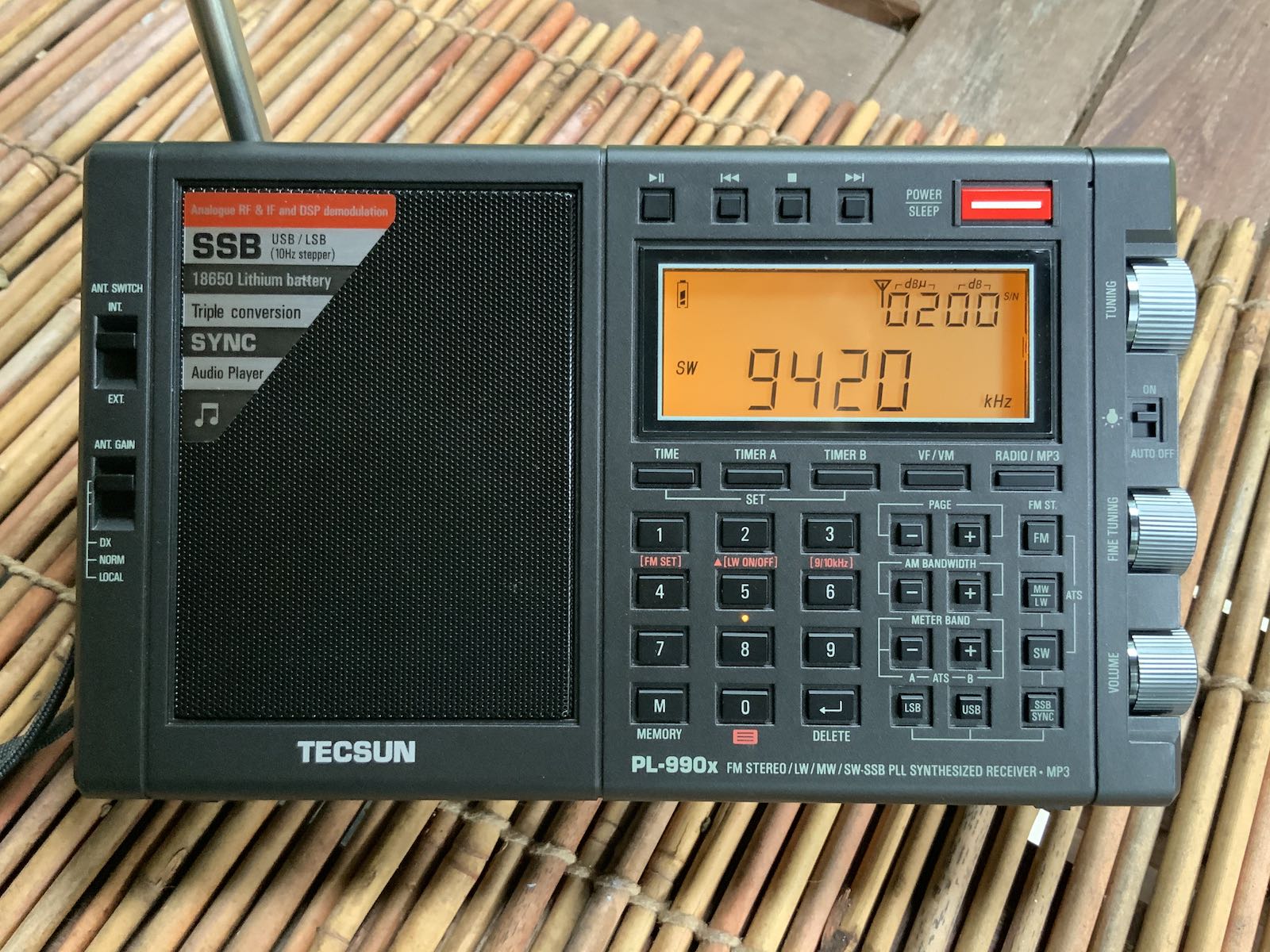 I suppose I’ve been holding out hope that the Voice of Greece would magically reappear on 9,420 kHz, but they’ve been off the air for 45 days now and we must assume this time it’s for good.
I suppose I’ve been holding out hope that the Voice of Greece would magically reappear on 9,420 kHz, but they’ve been off the air for 45 days now and we must assume this time it’s for good.

